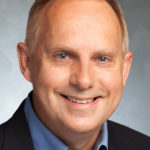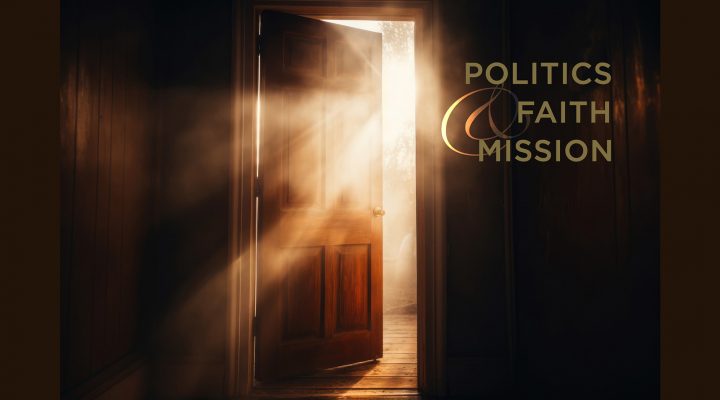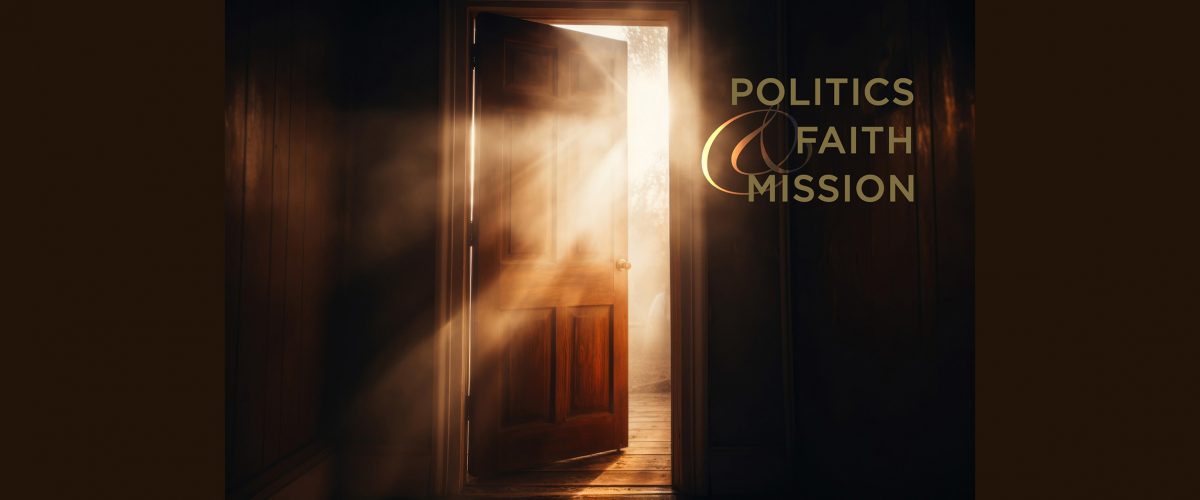Randolph “Randy” Marshall Hollerith was named the 11th dean of Washington National Cathedral in 2016. Under Dean Hollerith, the “nation’s church” has shed a decades-long reputation as an unfriendly place for people of color and has leaned into its call to be a house of prayer for all people. I am so grateful to Dean Hollerith for the chance to sit down with him in his office at the Cathedral and to talk about the job of leading this great institution in a time of great change.
Greg Garrett: Many cathedrals have a canon theologian, a theological thinker who helps cathedral communities reflect on issues of the day. But the National Cathedral decided in 2021 to appoint a canon historian, Pulitzer Prize-winning presidential historian Jon Meacham. I note he will be engaging former U.S. Rep. Liz Chaney in a public program at the Cathedral April 24. Could you talk with us about the reasoning behind this appointment and what a canon historian contributes to the mission of the National Cathedral?

Randolph “Randy” Marshall Hollerith
Randolph Hollerith: Thank you. That’s a great question. Jon has become a very good friend of the Cathedral, he’s a man of deep faith, and he loves the Episcopal Church. I wanted to find ways in which to engage him more here at the Cathedral, because I love the work he does.
I started doing some research, and I found there is a title, canon historian, within the church. They tend to be archivists and, of course, we already have an archivist. I’m not asking Jon to do that, but I really wanted Jon in this role, I wanted to honor him, first and foremost. And then I wanted Jon to be able to bring us a historical theological perspective on the issues of the day or the issues that he was preaching on, to have that input all the time. When he’s here, it’s such a great gift to the Cathedral.
GG: While the National Cathedral is clear that it receives no support from the federal government, the Cathedral was chartered by Congress in 1893, the foundation stone was laid in a ceremony attended by Teddy Roosevelt, and the final construction marked by a ceremony attended by George H.W. Bush. Practically speaking, the Cathedral is “America’s Church,” where inaugural prayer services, state funerals and national moments of mourning take place. What can you tell us about the responsibilities this creates for you and the Cathedral to speak out on public issues and about the role of the Cathedral in American life?
RH: That’s a great question too, and it’s been something I’ve been quite passionate about this year. Both de Tocqueville and George Washington said that without the fundamental values of religion, the American democracy could not stand. I think that is so deeply true. That does not mean in any way, shape or form the government needs to be Christian. But the values of Judaism, the values of Christianity, the values of Islam, the values of love and grace and understanding, they have to undergird our society in how we deal with one another.
“We’re spending the year talking about civility, love of neighbor, listening, honoring every human being as a beloved child of God.”
Every religious institution ought to be speaking into this, but we have a bit of a platform. So we’re spending the year talking about civility, love of neighbor, listening, honoring every human being as a beloved child of God. What does it mean to love one’s enemies as Jesus says? I kicked it off with a sermon in January. But whether it’s in preaching or in prayer or in programming, we’re going to focus on that at least through the end of the year.
Just a few weeks ago, we had a program where we had Gov. Cox of Utah and Gov. Moore from Maryland, along with a panel who were here talking about that very subject. Gov. Moore and Gov. Cox are very different on the political spectrum. And yet they have a very close, supportive relationship. They did an incredible job talking about what that relationship means, how they maintain it, what that means for the political life. And it was great. And then as you said, on the 24th, we have Liz Cheney here with Jon Meacham with taking this in the direction of what does it mean to be principled. What does it mean to have integrity?
GG: You had mentioned it doesn’t mean that America has to be a Christian nation.
RH: Absolutely not.
GG: We are facing a not insubstantial number of people who believe America does need to be a Christian nation, at least as they understand “Christian nation.” So one of the things I’ve been talking about for this series is white Christian nationalism. I’m wondering what you see when you look at that trend.
I’m thinking about the former president and his God Bless America Bible, and I was talking with Bishop Mariann Budde about Mr. Trump’s 2020 photo opportunity in front of St. John’s outside Lafayette Square, in which Mr. Trump seems to have wanted to enforce a bond with people who believe Christianity needs to be at the heart of what America is and what America does.
Maybe it’s a strange thing for devout Christians to speak out against something called “Christian,” but almost everybody I’ve talked to has been doing so because they see Christian nationalism as essentially un-Christian. What sorts of thoughts do you have about it? And are there ways for people like us who identify as deeply Christian to have conversation with people who call themselves Christian nationalists?
RH: On the last point, I’m sure there is, and I hope people who call ourselves Christians will have conversations with Christian nationalists because we really can’t deal with the problem unless we listen to the folks and understand them. But I completely agree with everyone you’ve been talking to that Christian nationalism, especially white Christian nationalism, is abhorrent. It’s an idol, a false idol.
It’s also, if you’re thinking about the white angle of it, deeply bigoted. So that doesn’t mean religion shouldn’t have a voice in the public square or have important things to say to government. Religion does, including Christianity. But somehow to think that the United States government needs to be whatever they define as “Christian” is absolutely the antithesis of what this democracy was created on.
GG: I was in the congregation when you offered a sermon about the Cathedral’s decision to remove historic windows commemorating Robert E. Lee and Stonewall Jackson and present again last fall when new windows replacing those donated by the Daughters of the Confederacy were dedicated. Can you talk with us about that journey, and perhaps how it represents a larger journey that the Cathedral has undertaken on racial justice and reconciliation?
“The two lancets of Robert E. Lee and the two lancets of Stonewall Jackson, were actually making it impossible for us to be a house of prayer for all people.”
RH: I did not accept the position of being dean of the National Cathedral in order to remove iconography from the building. That was not something that was on my list or what I was interested in doing at all. But it became very clear that those windows, the two lancets of Robert E. Lee and the two lancets of Stonewall Jackson, were actually making it impossible for us to be a house of prayer for all people. And they were making a significant number of people very uncomfortable.
Those windows are not front and center in the Cathedral, but they had been here since 1953, right on the cusp of the civil rights movement. We realized they had to come out, but what we didn’t want to do is just take them out and put them in storage or take them to the sub-crypt and leave them there.
So as you remember, we spent two years doing educational programming around the windows. What does it mean to have iconography in a church? What is it about those windows and why were they put there? What story is the Cathedral telling in its iconography? What story is it not telling in its iconography? And we spent a lot of time having conversations, which I think was great because we had to keep — we wanted to hold the tension, right?
They needed to come out, but we needed to talk about the issues. So when they came out, we spent about a year having more conversations and then created a committee to look at what the replacement windows would be. We were incredibly blessed that Kerry James Marshall, who was our first choice, agreed to create the stained-glass windows. And they’ve been such a gift. I think we’re one of only two places that has a permanent exhibit of a Kerry James Marshall work. And people haven’t seen them. I hope they’ll come and visit. They’re very powerful.
GG: In 2018, when we did the race and film program for the very first time, Get Out was the Saturday night film. And after that movie, I was walking down the hill to the Metro stop behind a bunch of students and faculty from Howard.
And what they were saying was never in a million years did they imagine that Washington National Cathedral would do this kind of program. I mean, the reputation of the Cathedral on the Howard campus was that it was not a friendly place for people of color, that it was not a place where hard questions like this were ever going to be asked. One of the wondrous things that’s happened here over the past few years is just this leaning into the mission, and those decisions around the windows are so powerfully symbolic of everything else I’ve seen going on here.
“We’re supposed to be the National Cathedral, and that means everyone, and everyone means everyone.”
RH: Well, thank you. It’s been really important for us. It’s been really important to me that first of all, when you walk in this cathedral for a service, if you sit down in one of those chairs and look up at the platform, you’re going to see somebody who looks like you. Every single Sunday, every single service, male, female, Black, white, gay, straight, you name it. Because we’re supposed to be the National Cathedral, and that means everyone, and everyone means everyone.
So we work on that very hard. But we also thought we had a platform that could take on some of these difficult issues and had a responsibility to do so, given the fact that Gothic cathedrals in the English style can be about as WASPy as WASPy gets, right?
GG: So true.
RH: And we’re very much wanting to change that dynamic so that it is a much more — and it is now a much more — broad place, which is such a gift to us.
GG: One of the questions I’m asking everyone for this series is about where in this time of tension and conflict people are able to find hope and grace. Could you tell us about what you’re reading, hearing or seeing that offers resurrection hope to you in this Easter season?
RH: I must say that when you think about the bifurcation of America around political lines and what we’re running into with this election, I’m sometimes in a very bad place about it. I worry that things are going to get much worse before they get better as we approach Nov. 5 and afterward.
But where I see a lot of hope is that I’ve been amazed to learn the number of organizations, the number of groups, the number of nonprofits, the number of universities who are working on issues around civility and around civics and around understanding our democracy and really paying attention to what responsibilities we have as Americans in our political process. That gives me great hope. It has felt really good to see that.
And then conversations like we held with the two governors, right? I mean they both got standing ovations and neither one of them, God bless them, said anything revelatory. It just showed how hungry people are to see that kind of bipartisan honoring one another between two political leaders.

Greg Garrett
Greg Garrett teaches creative writing, film, literature and theology classes at Baylor University. He is the author of two dozen books of fiction, nonfiction, memoir and translation, including the critically acclaimed novels Free Bird, Cycling, Shame and The Prodigal. His latest novel is Bastille Day. He is one of America’s leading voices on religion and culture. Two of his recent nonfiction books are In Conversation: Rowan Williams and Greg Garrett and A Long, Long Way: Hollywood’s Unfinished Journey from Racism to Reconciliation. He is a seminary-trained lay preacher in the Episcopal Church. He lives in Austin with his wife, Jeanie, and their two daughters.
More from this series:
Politics, faith and mission: A conversation with Jillian Mason Shannon
Politics, faith and mission: A conversation with Bishop Mariann Edgar Budde
Politics, faith and mission: A conversation with Vann Newkirk II
Politics, faith and mission: A conversation with Sarah McCammon
Politics, faith and mission: A conversation with Winnie Varghese
Politics, faith and mission: A conversation with Kaitlyn Schiess
Politics, faith and mission: A conversation with Russell Moore
Politics, faith and mission: A BNG interview series on the 2024 election and the Church
Politics, faith and mission: A talk with Tim Alberta on his book and faith journey
Politics, faith and mission: A conversation with Jemar Tisby
Politics, faith and mission: A conversation with Leonard Hamlin Sr.
Politics, faith and mission: A conversation with Ty Seidule
Politics, faith and mission: A conversation with Jessica Wai-Fong Wong


